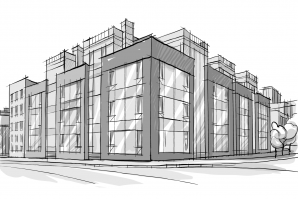Election day saw the defeat of measures M, N and O in El Dorado County. These highly charged measures were opposed by a broad coalition of farmers, business owners and civic leaders who believed these initiatives would diminish local control and restrict development decisions to bureaucrats outside El Dorado County.
Although the measures were soundly defeated, the question remains, what happens now? Does the defeat of these measures mean unfettered growth in El Dorado County, or is there a middle ground that can satisfy all sides?
From around 1988 to the present, El Dorado County has had somewhat of a split personality when it comes to land use entitlement and development. On one hand, El Dorado Hills has emerged as an upscale suburb featuring high-end homes, custom lots and multimillion dollar estates set around a private golf course. Elsewhere in the county, pressure is building to limit small lot development and preserve the area’s rural lifestyle. The effort to stop or slow growth has been led by recent transplants expressing concern about the traffic generated by new subdivisions and by extremists determined to stop the encroachment of suburban sprawl.
This situation led to a ballot fight in 1998, when four growth and development measures were contested. The only successful measure that year, Measure Y, blocked the approval of tentative subdivision maps if traffic increased to specified levels. The county implemented Measure Y, adopting a complex fee program and providing for developer contributions to fund improvements on Highway 50 and county roads.
After endless litigation and numerous ballot initiatives proposing and opposing different forms of a general plan, a new general plan was approved in 2004. Opponents, who argued the plan permits too much growth in the county, quickly qualified a ballot referendum. In the March 2005 election, El Dorado County voters upheld the proposed general plan and rejected a growth-control measure that would have tied growth to Highway 50 improvements.
From 2005 to 2011, the county was operating with a more measured approach. Due mainly to the recession, few projects were built out and only a handful of major projects were approved. However, with the economy back on track, 2013 saw multiple applications for new developments.
When draconian demands for growth restriction were rejected by the El Dorado County Board of Supervisors, activists sought to once again use the referendum process as the answer. In total, five measures vied for voter attention, all of which were responding to perceived growth issues that different groups felt were not being addressed at the board.
The defeat of these measures does not mark a rise in unrestrained development. El Dorado County is still under the rules passed by the voters almost 10 years ago.
But we need to ask ourselves what is the best way to manage zoning: through the ballot box or through the democratic process of board meetings, discussions and citizen input? This is why we have a representative democracy. We elect leaders who we trust to hire experts who give an unbiased opinion on these issues.
Additionally, the best decisions are ones that take time. No one in the business community is demanding an end to oversight from the board of supervisors. But we must come to the conclusion that the only way to see growth in the retail and service sectors is through residential growth.
County governments and the services they provide require taxes from the businesses and residents inside their county. The only way we can pay for our county services is to either allow more rooftops in our communities or be willing to pay higher taxes.
Furthermore, we’re not talking about sprawl but smart, measured growth that follows the General Plan of 2005. That plan established boundaries that clearly define where future growth can occur. This ensures El Dorado County will still have the charm that draws people here while ensuring that the tax base remains strong and healthy.
Let’s put our trust in those we elect and allow them to judge projects on their merit. The political wrangling will hopefully now be replaced with constructive conversations about the location, infrastructure and desirability of new applications.
By showing the residents of El Dorado County that the business community can still provide meaningful and manageable growth while preserving the beauty of the county, it is hoped that future attempts to wrestle development decisions away from the board of supervisors will be defeated — just like measures M, N and O.
Recommended For You

Reform Prop. 13
Is a discussion possible?
After all these years since California voters passed Proposition 13, what will it take to have a rational discussion about amending the way commercial property is assessed?

A Message for California’s GOP
Acuity with Kaitlyn MacGregor
At 25-years-old, Kaitlyn MacGregor is the new director of communications for the California Republican Party, and she has her work cut out for her. New data from the nonpartisan Public Policy Institute of California shows that young voters aren’t registering Republican and neither are moderates, African Americans or Latinos. With elections just weeks away, MacGregor will need to make strides quickly.

Kish Rajan Means Business
The GO-Biz director says he will ensure tax credits for businesses lead to more jobs
A report recently released in New Jersey shows that, of the $4 billion in tax credits the Garden State has given to companies since 2010, a whopping 43 percent have been for jobs that already exist. Kish Rajan, director of the Governor’s Office of Business and Economic Development,says that is definitely not going to happen in California

Got Storage?
California can't conserve its way out of a drought
Years of drought have baked away some of the divisions inside California’s Capitol, drawing opposing parties together in an effort to find solutions to the state’s ongoing water storage and conveyance problems.



